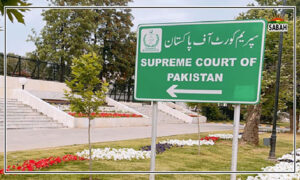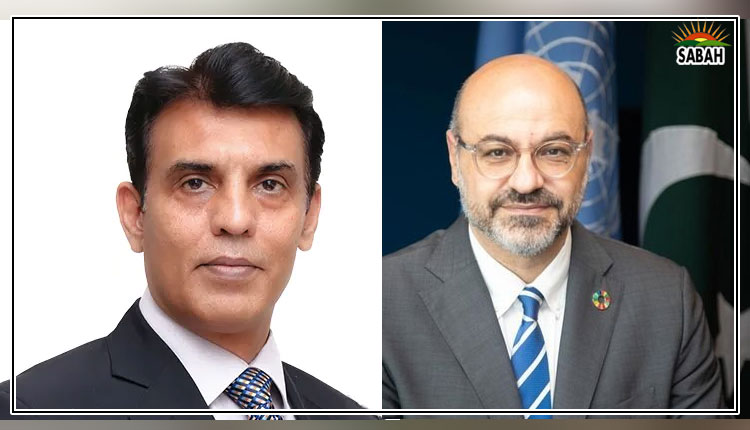Economic recovery plan … Abid Qaiyum Suleri | Samuel Rizk
FOR much of 2023, Pakistan’s economic trajectory fluctuated from default panic to mitigation mode. The road remained rocky with a complex political scene, a population burdened with the devastating aftermath of the 2022 floods, rocketing domestic inflation, and the rupee in free fall against the dollar.
With this backdrop, the government undertook timely tightening of external and domestic financing policy measures, combined with successful negotiations with the IMF, to conclude the critically needed $3 billion Stand-by Arrangement (SBA) until April 2024, a process which helped the country avoid sovereign default. As Pakistan transitions into the new year and moves towards a possible new IMF programme, chronic macroeconomic challenges will require urgent attention by the new government.
Market forecasts for 2024 are not strong, averaging at estimations of two per cent growth, with modest economic recovery. The spectre of inflation looms large, recording 29.7pc in December 2023, and is expected to stay above 20pc in 2024. Unemployment and poverty rates have surged, and foreign reserves are under pressure due to the increasing trade deficit.
Risks posed by low investments, inadequate exports, low productivity, and an energy sector crisis will further hinder sustained recovery. Inadequacies in the taxation system, if not addressed, will make it difficult for the next government to mobilise domestic resources to finance any promised development spending. Additional borrowing for these expenditures will not be a sustainable option.
Beyond the life of the current IMF SBA, the scale of financing required for Pakistan’s external payments is enormous. Of its total $260bn debt, $116bn is external. The high interest expense relative to fiscal revenue poses high risks to debt sustainability. The net debt stock is projected to remain high at 70pc of GDP, and interest expense as a fraction of revenue is projected to remain at 45pc.
Meanwhile, Pakistan’s development expenditure — on activities related to education, health, and more — remains under 3pc, as do capital stock, public investment efficiency, and tax-to-GDP ratios compared to regional peers.
One way out of this challenging outlook is to continue with the contractionary fiscal measures, including high indirect taxation and reduction in public sector expenditures on social services delivery. However, the potential adverse impact of such policies on the most vulnerable segments of the population necessitates a shift towards more people-centric economic policies rooted in economic justice.
The United Nations Development Programme’s Integrated SDG Insights Report of 2023 showed Pakistan on track to achieve only 35 out of 169 Sustainable Development Goals targets. If Pakistan is to reduce the number of people living in poverty from 6.1 million to 3.9m by 2030, it will need a comprehensive ‘SDG Push’ comprising an integrated set of high-intensity economic reforms and accelerator pathways, especially in the areas of taxation and revenue, sustainable debt management, and climate finance.
UNDP’s Asia-Pacific Regional Human Development Report 2024, also notes that, to unlock new drivers of growth, Pakistan will need to recalibrate and pivot growth strategies to fintech and agri-tech, with reform as the lynchpin of economic resilience.
Achieving a growth target higher than 2pc will require not only maintaining current fiscal policies, but also a political consensus to undertake long overdue structural reforms. It will require a painful but necessary shift in the national economic and financial policy paradigm — from one that is overburdened by and mainly servicing the debt, to a model of resilient and inclusive growth that is driven by equity-based revenue generation, innovative financing (SDG investments and climate capital), competitive productivity, and strong measures of transparency.
It will require easing the disproportionate economic burden placed on marginalised segments of the population. And finally, it will build institutional and community resilience to future climate shocks.
Through our partnership for the ‘Prosperity for Pakistan’ initiative, UNDP and the Sustainable Development Policy Institute are jointly approaching political, economic, government, and multilateral actors to advocate that a well-coordinated, carefully calibrated, and timely response by the new government — together with parliamentary political parties and key stakeholders — can develop a consensus for a mid-term National Economic Recovery Plan (NERP) to achieve long-term stabilisation and people-centred growth.
Advised by leading Pakistani economists, experienced practitioners and policy experts, the NERP proposes five high-impact policy interventions:
- Ensure solvency, revenue and fiscal sustainability (continuation of IMF programme; SDG-aligned public finance management, rightsizing state-owned enterprises, tax and pension reforms);
- Bend the political economy of Pakistan towards economic justice and good governance (critical reforms in the National Finance Commission and local government laws/ structures);
- Reduce deficit through inclusive growth and effective import-export management (competitive and diversified trade regime);
- Transition to green economy (focused interventions on climate finance, disaster-risk insurance, and water and energy efficiency);
- Ensure social protection and social safety nets to minimise the adverse impact of structural reforms on the most vulnerable.
The new government will also need to focus on the interplay between climate change and existing economic vulnerabilities in Pakistan, and adopt a climate-economic-resilience framework to tackle it head-on.
It could potentially work on building a credit line from the IMF’s Resilience and Sustainability Trust while negotiating a new loan programme, and secure Pakistan’s financial resilience and debt sustainability.
The year 2024 offers a unique opportunity for Pakistan’s political and policy elite to craft a new political, economic and social contract that rebuilds trust between the people and the institutions that serve them, pivots the country towards economic resilience, and places it back on an ambitious development pathway towards a prosperous and resilient Pakistan.
Courtesy DAWN












